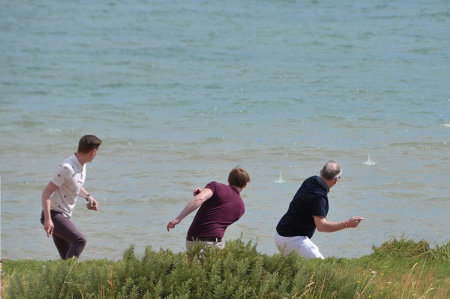Source: Alamy
Suggestions that Plymouth University is currently beset by “uncertainty” after the recent return to office of its vice-chancellor, Wendy Purcell, have been described as “maliciously misinformed” by Louise Bimpson, our Corporate Director of Human Resources.
Ms Bimpson told our reporter Keith Ponting (30) that there was nothing “at all uncertain” about Professor Purcell’s return. It was “perfectly clear” from the Plymouth University statement that while she remained as vice-chancellor, “overall responsibility for the running of the university” would be firmly in the hands of David Coslett, the deputy vice-chancellor. What could possibly be clearer than that?
There was equal clarity about Professor Purcell’s new role. She would have, again according to the Plymouth statement, “a strategic portfolio” focused on “external and sector relations and the university’s wider enterprise agenda”. What could possibly be clearer than that?
Ms Bimpson did, however, accept that there were “one or two remaining areas of slight vagueness” about the Plymouth arrangements. These included the nature of the original charges against Professor Purcell, whether or not the vice-chancellor had returned on her previous salary, whether the university would pay her legal fees in whole or in part, whether any financial compensation would be paid to her as part of the settlement, and whether she would be leaving the institution at a later date.
However, insisted Ms Bimpson, these “minor areas of residual uncertainty paled into insignificance” when considered alongside the “commendably clear-cut and consistent manner” in which the university had initially removed Professor Purcell from office for no stated reason, and had then, again for no stated reason, re-installed her in office just four months later. What, repeated Ms Bimpson, could possibly be clearer than that?
REF reform

Our deputy head of REF strategy, Brian Bryan, has added his voice to the debate about the form of assessment best suited to the next research excellence framework.
Although Mr Bryan admitted to having some respect for those who were arguing for a greater role to be played by metrics, he was concerned about metrics’ “robustness, relevance outside the sciences, and potential negative effect on early career researchers and women”. It was principally for these reasons that he had “with some reluctance” come round to advocating the total immersion research assessment impact matrix (TIRAIM).
Although the finer details of this approach are relatively abstruse, in essence it involves tying a small to medium-sized rock around an individual’s research submission, then throwing the whole bundle into a nearby pond and waiting to see whether or not the research eventually displays its “impactfulness” by floating to the surface.
Mr Bryan agreed that “a few niggling questions” still remained to be answered over the exact size of the rock and the most appropriate depth of the pond. However, he believed that when compared with the current rationality of the REF impact agenda, his “total immersion approach” made what he modestly described as “a great deal of sense”.
Thought for the week
(contributed by Jennifer Doubleday, Head of Personal Development)
Please note that in order to accord with the university’s Branding Consistency Policy, all Xmas decorations this year must be in mauve and heliotrope and carry the motto “People Matter at Poppleton”. Have a good one.

